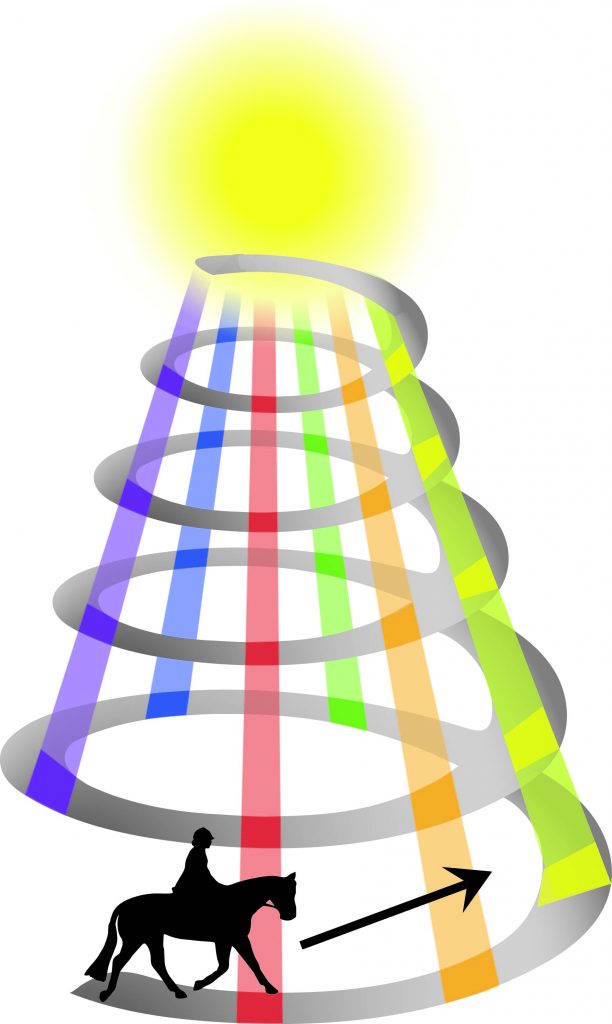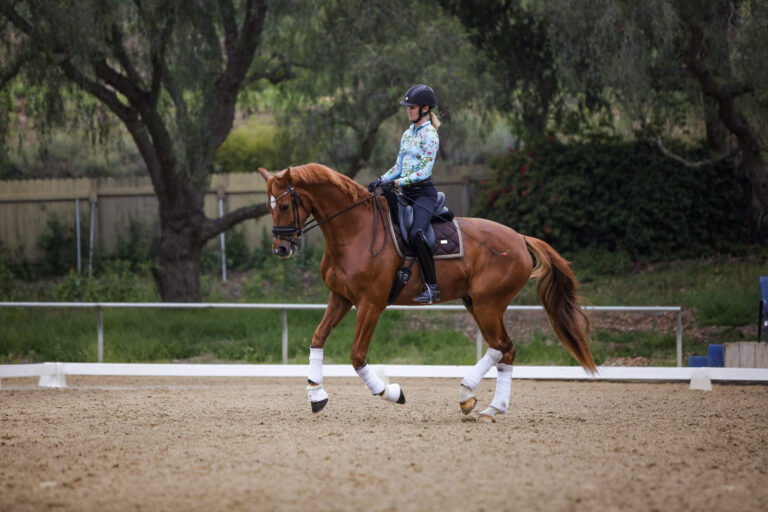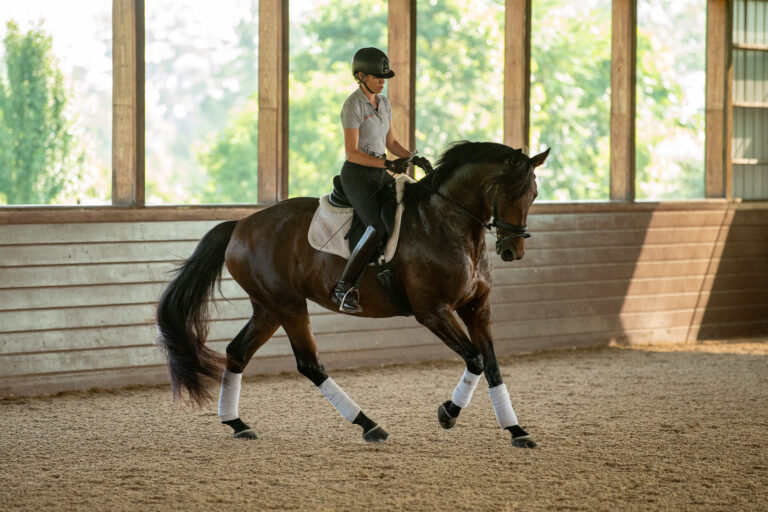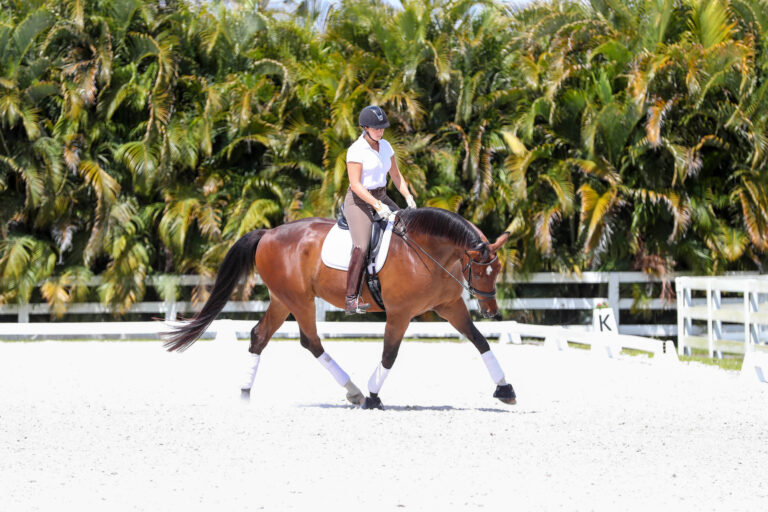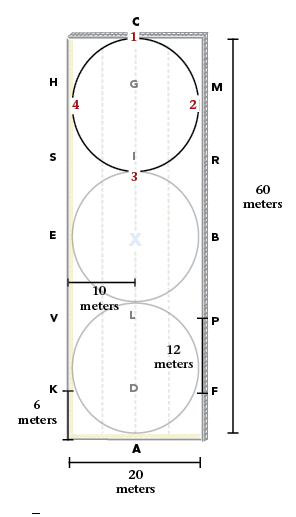As a young rider in Hungary, I remember how three moments of evolutionary breakthroughs made all the difference.
Like all young riders, I was impressed when I looked at the sophisticated equine professors that moved with big, round necks, as opposed to thin, inverted racehorse-looking ones. Being pragmatic and used to getting things done quickly, the easiest solution to achieve a round neck seemed to be manipulating the neck so that it appeared to be round. My coaches got on my case, leaving me with a sense of desperation. If not actively working on the horse’s neck, how in the world would I get such a round and tall carriage?
Backed up by my relentless coach, my patient horses soon revealed a most surprising discovery: I could influence the neck’s position from the haunches rather than from the reins. The principle of this discovery is similar to the principle of sweeping dust into a dustbin with a broom. As you sweep, the dustbin travels forward to receive the dust. It has to move in order to receive the dirt being gathered up. Similarly, the horse is gathered up from behind by energizing his haunches and giving him the room through the reins to articulate freely. Trying to achieve collection by working on the horse’s neck cuts the horse off in the front. Confining reins prevents the hind legs from powerfully supporting the rider’s weight and balance by lifting him with suspension. Following this, I realized that a horse consists of three bascules:
- The neck (the easiest to access and manipulate)
- The back (which takes more knowledge and skill to engage). If a horse has what we called a “warm” back–loose, supple and oscillating–he can lift the rider. It’s almost like sitting on a suction cup; it comes up and supports the rider’s pelvis. On the other hand, if a horse has what we called a “cold” back–low and stiff–the rider achieves nothing other than growing old sitting on it.
- The hind end (the haunches should thrust the pelvis forward to lower the croup and to actually articulate at the lumbar-sacral joint). This last bascule is the one that is widely ignored by riders. If it were addressed, one would see many more horses that lower themselves toward the ground in supple strides from elastic joints. Horses with unexercised hind leg joints move stiffly with high croups. Horses with ill-developed muscles, lacking strength and suppleness, might appear to have round necks but remain still disconnected through the topline.
Once I understood to ride the horse’s hindquarters instead of his neck, the second breakthrough came when I realized that riding is a dancing partnership with the horse. Every horse has a certain signature rhythm—a footfall that’s like a fingerprint. Only when a rider aids in the rhythm of the horse’s footfalls will they make sense to the horse. Horses don’t understand banging and poking with legs out of phase with their footfalls, although the rider might use an occasional kick as a wake-up call. A horse that’s pushed out of his signature rhythm will run off and not be able to do relaxed extensions.
So we were asked to get into a rising trot and tell our coach when we found the horse’s perfect rhythmic profile. Once we had established that, we were able to stimulate the horse to more activity without changing his rhythm. This resulted in a dancing, free, forward, suspended and rhythmic movement without the horse being confined in the front.
The third important principle was an understanding of how to keep the horse together without confining his haunches from the reins. My coaches insisted that the reins may be used for a thousand things except to inhibit the haunches or to set the shape of his neck. A well-schooled horse will collect on even sagging reins into a piaffe or school canter. No need to hold him together, only drive him from leg and seat. Consistent and knowledgeable use of half halts educate the horse to understand the leg aids not merely as “go” but also as “energize” without running off.
When thinking about collecting a horse, many riders only think of closing him longitudinally from hocks to bridle. However, one must realize that one closes the horse also laterally from outside leg to inside rein and from inside leg to outside rein, like an X. Half pass and the shoulder-in, for instance, are exercises that utilize this concept of closing the horse laterally. In the half pass, when the horse is closed correctly, he lowers his outside hip and thrusts his pelvis toward the inside shoulder. In the shoulder-in, the inside hock is supposed to reach so deep—not just across but deep forward—that it reaches level with the outside stifle. The rider who fails to close the horse longitudinally as well as laterally will fail to engage him.
These three principles allowed me to train to higher levels. I wish you well in riding your horse in your horse’s native rhythm, closed from behind, strong and seated, elastic and supple.
Charles de Kunffy was a USEF “S” dressage judge for over 42 years and a popular clinician who also conducted courses for judges and instructors around the world. Born and raised in Hungary, he is based in San Francisco, Calif., and is the author of six books, including Dressage Principles Illuminated, and the video The Art of Classical Dressage. He maintains www.charlesdekunffy.com.


